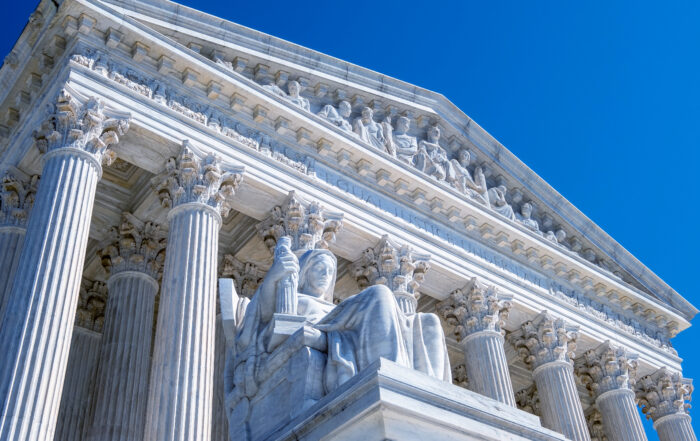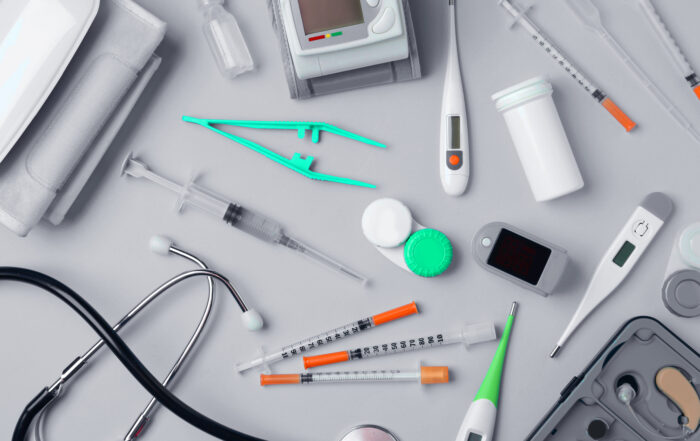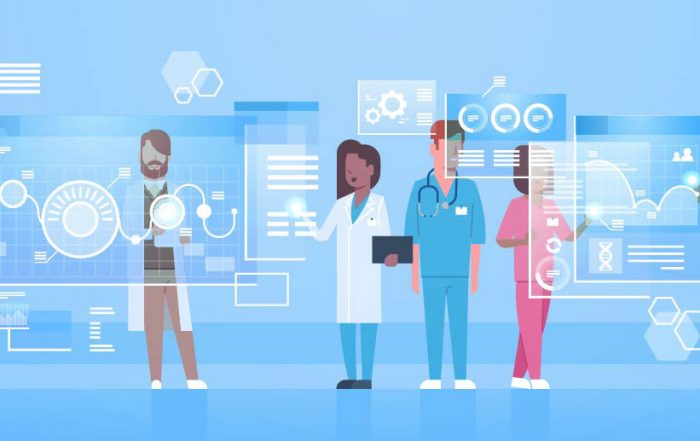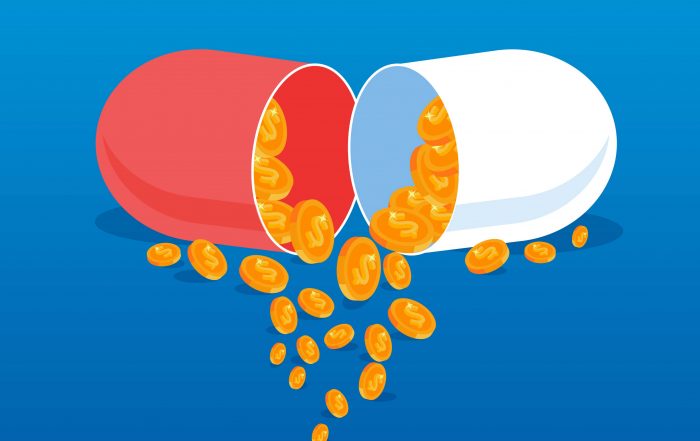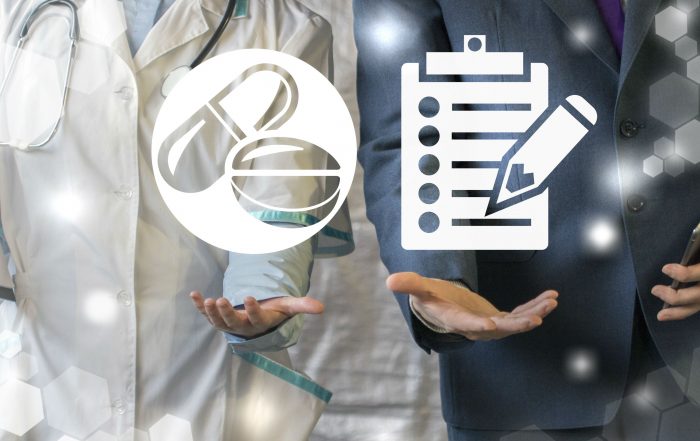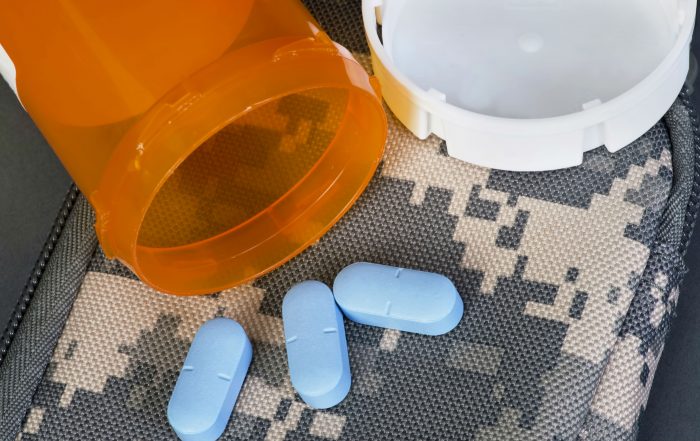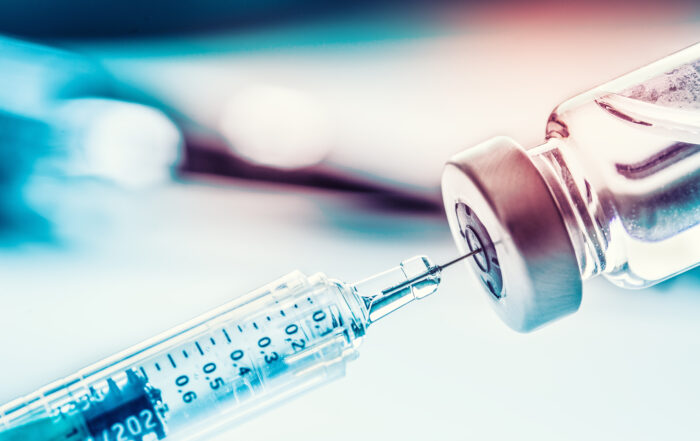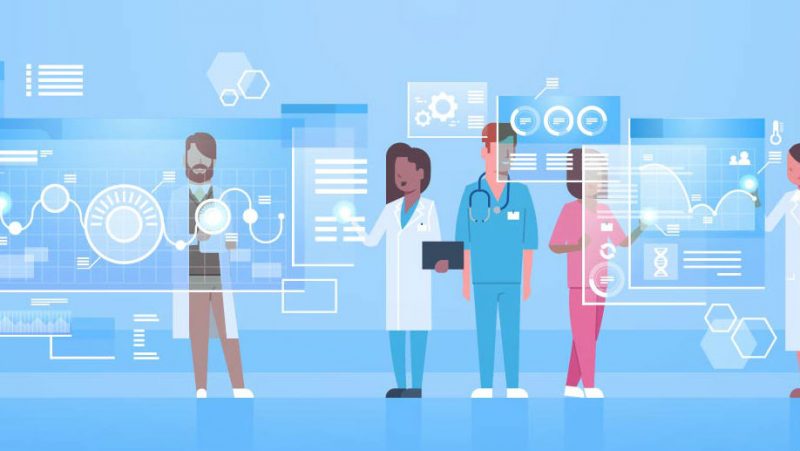
FDA’s Historical Use of “Real World Evidence”
by Neil A. Belson
Neil A. Belson is Of Counsel at Potomac Law Group in Washington, DC, where he handles transactional and regulatory compliance matters. He focuses on Precision Medicine, Life Sciences, and Information Technology. Mr. Belson has also been an entrepreneur, and has founded, run, and sold an industrial biotechnology business.
In June 2017, FDA approved a new indication for a medical device without requiring any new clinical trials. This approval marked the onset of a new era in drug and medical device regulation: the systemic use of “Real World Evidence” (RWE).* FDA based its approval on records of the product’s actual patient use rather than on randomized clinical trials.
Specifically, FDA approved a new procedure for a transcatheter aortic valve replacement (TAVR). The manufacturer had obtained its initial marketing approval from FDA in 2011. Upon obtaining this approval, the device manufacturer had established a product registry which resulted in a database containing records of over 100,000 TAVR records. Among these records were 600 records relating to the then off-label use of the new procedure. Based on the product registry data, FDA approved use of the new procedure without requiring traditional, randomized clinical trials (RCTs), saving both time and money.1,2
FDA’s acceptance and use of RWE dramatically expedited the agency’s ability to review and approve the TAVR new procedure. The United States was the 42nd nation to originally approve the device in 2011. However, by using RWE, the U.S. became the first country to approve the new procedure.3
This approval represented the latest milestone in efforts to encourage expanded use of RWE. Section 3022 of the 21st Century America Cures Act, enacted in December 2016, directed FDA to develop a program to evaluate potential use of RWE to support approvals for new drug indications, as well as satisfy postapproval study requirements.4 On August 31, 2017, FDA’s Center for Devices and Radiological Health (CDRH) and Center for Biologics Evaluation and Research (CBER) issued a guidance document describing situations in which they could accept RWE in support of regulatory decisions involving medical devices.5 CDRH reported that its use of RWE in premarket and postmarket regulatory decisions increased by 193% compared to a 2015 baseline.6
Private sector activity in RWE is also growing: a 2017 survey by Deloitte found that 54% of responding life sciences companies are attempting to significantly increase their RWE capabilities.7 Survey participants ranked market access and R&D as the two areas offering the greatest opportunities to secure benefits from RWE.8
When used in appropriate situations, RWE represents a potentially faster, less expensive, and more useful alternative to RCTs for obtaining drug and device regulatory approvals. The limitations and deficiencies of traditional RCTs are well-known. RCTs represent approximately 60%9 of the approximately $2.6 billion to develop a new drug,10 yet they are in many ways an inefficient and incomplete way of measuring drug and device safety and efficacy. Only about 14% of drug candidates which enter Phase I clinical studies ultimately receive FDA commercial approval, including less than 4% of oncology drug candidates.11 The subject populations used in RCTs may not necessarily be representative of real-life populations: for example, the RCT may be limited to subjects between 18 and 65 years old, while the actual patient population may be disproportionately older than 65 years old. Furthermore, RCTs may exclude patients with comorbidities (patients who have multiple, unrelated, pathologic or disease processes), resulting in a study population which is healthier on average than the actual patient population which might use a drug.12,13 RCTs may be unsuitable due to ethical concerns in some situations.14 Nearly 80% of clinical trials fail to meet their initial enrollment projections.15 And in cases of rare diseases, meaningful RCTs may be impractical or even impossible due to an inadequate number of patients on whom to conduct studies.
Nonetheless, while explicit legislative and regulatory policy support for RWE is relatively new, FDA’s use of data from sources other than RCTs in approving new drugs and devices is not new. This article examines some previous situations in which FDA has issued drug and device approvals based at least in part on data from non-RCT sources. An examination of past uses of RWE may help inform us of at least some of the situations in which RWE could prove particularly suitable for supporting regulatory approvals in the relatively near term.
What is “Real World Evidence”?
FDA has defined RWE as “clinical evidence regarding the usage and potential benefits or risks of a medical product derived from analysis of Real World Data.”16 The Duke-Margolis Center for Health Policy explained, in a white paper prepared with FDA funding, that RWE is “evidence derived from Real-World Data through the application of research methods.”17 “Real world data” (or RWD), according to FDA, consists of information relating to patient health status or the delivery of health care such as electronic health records (EHRs), insurance claims data, product or disease registries, or at-home patient monitoring devices, and can also include data on environmental exposures and socio-economic factors.18,19
RWE studies can be prospective, retrospective or both—that is, they can be either based on pre-existing data, future data, or a combination of both. It is important, though, to note that RWE is not merely observational or anecdotal data. Rather, RWE requires careful clinical design in order to measure the effect of the study drug, device, or treatment on patient health. Furthermore, RWE-based studies are subject to the same “substantial evidence” standards required of RCTs.
Historical Uses of RWE
FDA has long relied on real-life data for purposes of postmarket approval regulation. “Real life” information is a critical part of FDA’s postmarket surveillance testing, and FDA generally requires postmarketing studies in conjunction with its accelerated approval programs. Use of real world information has been less extensive and less systematic in the pre-approval context but nonetheless, FDA has accepted information from non-RCT sources for a number of premarket approval purposes, too. Although no single repository of information seems to exist regarding FDA’s historical use of RWE, a few generalizations can nonetheless be made based on a survey of information available on-line.
FDA Acceptance of Natural History Studies
FDA’s most common historical use of non-RCT data for regulatory approvals is probably the use of disease natural histories as a control in “single arm” clinical studies of treatments for rare diseases. A “natural history study” follows the progression of a disease or condition in the absence of a treatment from the time just before its onset until its final outcome, i.e., death, disability, or recovery of the patient. In a single-arm clinical trial with a natural history control, all study subjects receive the same experimental treatment and the results of this treatment are then compared against the natural history progression of the disease.
The case for FDA’s acceptance of disease natural histories is especially compelling when there is no approved treatment for a disease, and death or continued deterioration in the patient’s condition is likely absent medical intervention. Use of natural history controls in such contexts makes obvious sense, both because it can be difficult to obtain an adequate number of patients to conduct a meaningful RCT and because it could be unethical to conduct a study which involves allowing patients’ disease to progress untreated. The paragraphs below describe examples where FDA accepted disease natural history controls in approving drug treatments for rare diseases based on the results of a single-arm clinical trial. The addendum to this article contains additional examples.
Brineura—In 2017, FDA approved Brineura (cerliponase alfa) as a treatment for a form of Batten disease, following a “single-arm” study which used a natural history “control.” Brineura was the first FDA-approved treatment to slow loss of walking ability in patients with late infantile neuronal ceroid lipofuscinosis type 2 (CLN2). CLN2 disease is a rare inherited disorder occurring in approximately two to four of every 100,000 live births in the U.S., which often causes children to require a wheelchair. Most affected children do not survive past their teens.
The clinical trial establishing Brineura’s efficacy was a non-randomized, single-arm dose escalation clinical study in 22 symptomatic pediatric patients. The “control” or comparator consisted of 42 untreated patients with CLN2 disease from a natural history cohort. Patients treated with Brineura suffered fewer declines in walking ability compared to the untreated patients in the natural history cohort.20
Vimizin—FDA used real world data generated on studies of related diseases to approve Vimizin (Elosulfase alfa) in 2014, an enzyme replacement therapy (ERT), as the first approved treatment for Morquio syndrome. Morquio syndrome is one of a class of mucopolysaccharidoses (MPS), a group of rare inherited disorders caused by the lack or inability of lysosomal enzymes to break down certain carbohydrates. Vimizin was the fourth ERT to receive approval for treatment of an MPS (although the prior treatments were each approved for different MPS disorders). FDA relied on regulatory histories of the other MPS ERTs, as well as historical data from other lysosomal disorders, along with a single trial of a small premarket population.
Future Use of Natural Histories: FDA has indicated it intends to expand use of natural history studies to reduce the need for placebo controls in developing treatments for rare diseases. FDA Commissioner Gottlieb recently stated, “We’ve been working overtime to develop models that can simulate the behavior of placebo arms in the setting of rare diseases, where recruiting for clinical trials can be especially hard.”21 His comment came in conjunction with FDA’s announcement that it would fund natural history studies relating, respectively, to Friedreich’s ataxia, pregnancy and lactation-associated osteoporosis, sickle-cell anemia, Angelman syndrome, and myotonic muscular dystrophy type 1.22
Other Situations in Which FDA Has Accepted Non-RCT Data
Other situations in which FDA has used non-RCT data for regulatory approvals include use of the expanded access program to create a database of real world data, and approvals of new indications of a drug or device which is already approved for at least one indication. The latter situation is especially amenable to generation and use of RWE, because the initial approval allows the manufacturer/sponsor to create a product registry which monitors product usage.
Approvals Based on Expanded Access Program Data
Lutathera—FDA approved Lutathera (lutetium Lu 177 dotatate), a radioactive drug (or radiopharmaceuical) for treatment of somastatin receptor-positive instances of a type of cancer that affects the pancreas or gastrointestinal tract known as gastroenteropancreatic neuroendocrine tumors (GEP-NETs), based in part on data generated through the expanded access program. GEP-NETs are a rare group of cancers for which there are limited treatment options if initial therapy is unsuccessful.
Lutathera’s approval was supported by two studies. One was an RCT with 229 patients. The second study was based on data from a single-arm, open-label study of 1,214 patients with somatostatin receptor-positive tumors, including GEP-NETS, who received Lutathera at a single site in the Netherlands. Complete or partial tumor shrinkage was reported in 16 percent of a subset of 360 patients with GEP-NETs who were evaluated for response by FDA. Patients initially enrolled in the study received Lutathera as part of an expanded access program.23,24
Use of RWE to Support Expanded Labeling
The TAVR new indication described at the start of this article is one instance in which FDA accepted RWE in support of a new indication for an already-approved medical device. FDA has also agreed to accept real world data in a study for potential label expansion of a class III medical device. FDA originally approved the EXOGEN device, an ultrasound bone healing system, in 1994 for fracture healing in established non-unions (excluding skull and vertebrae) and conservatively treated fresh fractures of the tibia and radius. The device has since become used more broadly and is generally reimbursed by payers for off-label purposes. A formal study to evaluate the device’s effectiveness in other bones (except skull/vertebrae), which is intended for regulatory submission, is now ongoing using real world data. The current study is comparing the experience of patients participating in a device registry with matched real world comparators drawn from health insurance claims data. In addition to relying on real world data, this study differs from traditional RCT design in that subjects treated with EXOGEN are contacted periodically to find out whether the fracture has healed, with patient-reported outcomes being validated through use of medical billing records of treating clinicians.25
Conclusion
While FDA’s policy focus on encouraging use of RWE in support of product approval submissions is a new development, the agency has a history of accepting real-life or historical data in support of regulatory applications in certain situations. The most common of these seems to involve treatment candidates for rare diseases for which no approved treatment currently exists and where allowing the condition to continue untreated is likely to result in death or continued deterioration of the patient’s health. Other examples include situations where drug use under the expanded access generates real world data which can then be used in support of a product approval submission, and applications for expanded labeling of products which are already approved for one indication which then subsequently become used in medical practice for off-label purposes. The latter instance is particularly amenable to an RWE-based approval of a new indication if the manufacturer has proactively established a product registry which allows evaluation of the product’s safety and effectiveness through a review of historical data relating to the proposed new indication.
Our understanding of the universe of possible applications of RWE, and the means and technologies of generating it, is still evolving. Nonetheless, a look back at FDA’s historical uses of real world data provides useful guidance in predicting some initial regulatory uses of RWE in the future.
Addendum
Situations in which FDA has accepted disease natural histories as controls in single-arm clinical trials
(a) Avelumab. FDA approved Avelumab (a progammed death ligand blocking human IgG1 lambda monoclonal antibody) as a therapy for metastatic Merkel cell carcinoma. Real world data was used as benchmarks to characterize the natural history of the disease. A subset of trial patients who responded positively to treatment was identified through contrast with the RW benchmarks, leading to approval of the drug for that subset. European Union and Japanese regulatory authorities also approved Avelumab for that subset.26
(b) Myozyme. FDA approved Myozyme (alglucosidase alfa), an enzyme replacement therapy (ERT), in 2006 for treatment of Pompe disease, a rare inherited lysosomal storage disorder, following a clinical study which used a historical cohort of untreated individuals as a benchmark. The sponsor demonstrated efficacy with respect to the infantile onset form of the disease using a single-arm open-label clinical study of 18 patients. The study assessed efficacy by comparing the treated group over a period ranging from 52 to 106 weeks to a historical cohort of 61 untreated patients born between 1982 and 2002 who were identified through a retrospective medical chart review (only one of whom was alive).27
(c) Vistogard. In 2015, FDA approved Vistogard (Uridine Triacetate) as an emergency treatment for patients who receive overdoses of two chemotherapy drugs or exhibit severe adverse reactions to the drugs following open-label safety and efficacy trials of 135 patients. The patient had either received overdoses of fluorouracil or capecitabine or presented severe or life-threatening toxicities within four days following administration of either chemotherapy drug.28,29 FDA also utilized historical data, including in its evaluation 25 historical case reports of patients who received overdoses of the two chemotherapy agents and who did not receive Vistogard.30
(d) Carbaglu. FDA relied on historical studies to approve carglumic acid (Carbaglu) for treating hyperammonia caused by N-acetylglutamate synthase (NAGS) deficiency, a rare genetic disorder which can be fatal or cause permanent central nervous system damage in babies soon after birth if not detected and treated quickly. FDA relied on a retrospective review of 23 NAGS deficiency patients who received Carbaglu for a median of approximately eight years. In these trials, Carbaglu reduced blood ammonia levels within 24 hours and brought them to normal within three days.31,32
(e) Refludan. FDA approved Refludan in 1998 for treatment of Heparin-induced thrombocytopenia (HIT), which is an “allergy-like” adverse reaction to the anti-coagulant medication heparin which if left untreated can result in limb amputation or death. FDA determined efficacy following single-arm clinical trials of 198 patients who used Refludan compared with an historical control group of 182 patients obtained from a recent retrospective registry who received other treatments.33 (Note: Refludan has since been withdrawn from the market.)
(f) Blincynto. FDA approved Blincynto (Blinatumomab) in 2014 for the treatment of Philadelphia chromosome-negative relapsed or refractory B-cell recursor acute lumphoblastic leukemia (ALL). The main study supporting this application was a Phase 2, fixed-dose, open-label, single-arm trial that included a core study of 185 patients to assess the treatment efficacy and safety. The results of this study were compared with a retrospective pooled analysis of historical data on 1139 patients from 1990 to 2014 on hematological remission rates and survival among adult patients with relapsed/refractory ALL treated with standard of care therapy. This historical database was assembled by combining existing databases from the U.S. and European Union from 1139 patients that had similar characteristics to the patients in the main study with respect to previous treatment status.34, 35, 36
- Shuren, J. and B. Zuckerman, “How Creative FDA Regulation Led to First-in-the-World Approval of a Cutting-Edge Heart Valve.” FDA Voice. Posted June 14, 2017. https://blogs.fda.gov/fdavoice/index.php/2017/06/how-creative-fda-regulation-led-to-first-in-the-world-approval-of-a-cutting-edge-heart-valve/.
- Mezher, M., “FDA Used Real-World Evidence in Heart Valve Approval.” RAPS: Regulatory Focus, June 14, 2017. https://www.raps.org/news-articles/news-articles/2017/6/fda-used-real-world-evidence-in-heart-valve-approval.
- Shuren, 2017.
- Public Law 114-255 (Dec. 13, 2016).
- U.S. Department of Health and Human Services, Food and Drug Administration, “Use of Real World Evidence to Support Regulatory Decision-Making for Medical Devices. Issued August 31, 2017 (FDA, August 31, 2017). https://www.fda.gov/downloads/MedicalDevices/DeviceRegulationandGuidance/GuidanceDocuments/UCM513027.pdf.
- Center for Devices and Radiological Health (CDRH) 2016-2017 Strategic Priorities – Accomplishments. https://www.fda.gov/downloads/AboutFDA/CentersOffices/OfficeofMedicalProductsandTobacco/CDRH/CDRHVisionandMission/UCM592694.pdf.
- Deloitte, “Getting Real With Real World Evidence: 2017 RWE Benchmark Survey.” https://www2.deloitte.com/us/en/pages/life-sciences-and-health-care/articles/real-world-evidence-benchmarking-survey.html.
- Deloitte, 2017.
- Viceconti, M., C. Cobelli, T. Haddad, A. Himes, B. Kovatchev and M. Palmer, “In silico assessment of biomedical products: The conundrum of rare but not so rare events in two case studies.” Proc IMechE Part H: J Engineering in Medicine 2017, Vol. 231 (5) 455-466. http://eprints.whiterose.ac.uk/113971/1/pap%20ISCT%20x%20imeche%20OA%20version.pdf.
- DiMasi J.A, H.G. Grabowski and R.W. Hansen, “The Cost of Drug Development.” Correspondence, NEJM, May 14, 2015, http://www.nejm.org/doi/full/10.1056/NEJMc1504317.
- Wong, C., K. Siah and A. Lo, “Estimation of clinical trial success rates and related parameters.” Biostatistics, kxx069, https://doi.org/10.1093/biostatistics/kxx069, Jan. 31, 2018. https://academic.oup.com/biostatistics/advance-article/doi/10.1093/biostatistics/kxx069/4817524.
- See generally, Makady, A., A. de Boer, H. Hillege, O. Klungel and W. Goettsch, “ What Is Real-World Data? A Review of Definitions Based on Literature and Stakeholder Interviews?” Value in Health 20: 858-865 (2017). file:///C:/Documents/FDA%20in%20new%20computer/FDA/FDLI/RWE%20Case%20Study%20Article/ISPOR%20article%20on%20defining%20RWD.pdf.
- Span, P., “The Clinical Trial is Open. The Elderly Need Not Apply.” N.Y. Times, Apr. 13, 2018. https://www.nytimes.com/2018/04/13/health/elderly-clinical-trials.html.
- FDA, August 31, 2017.
- Deloitte, 2017.
- FDA, August 31, 2017.
- Duke Margolis Center for Health Policy, “A Framework for Regulatory Use of Real-World Evidence,” Sept. 13, 2017. https://healthpolicy.duke.edu/sites/default/files/atoms/files/rwe_white_paper_2017.09.06.pdf.
- FDA, August 31, 2017.
- This article relies on FDA’s definitions of the terms “real world evidence” and “real world data” but there is no universal acceptance of a single definition. A recent study on the definition of “real world data,” consisting of a review of 53 documents and interviews with 20 stakeholders, reported 38 different definitions. (Makady et al., 2017).
- “FDA approves first treatment for a form of Batten disease” (April 27, 2017). https://www.fda.gov/NewsEvents/Newsroom/PressAnnouncements/ucm555613.htm.
- Luxner, L., “Rare Disease Groups Welcome FDA’s Embrace of ‘Real World’ Data Clinical Trials.” SMA News Today, March 12, 2018. https://smanewstoday.com/2018/03/12/rare-disease-groups-welcome-fdas-embrace-real-world-data-clinical-trials/.
- Id.
- “FDA approves new treatment for certain digestive tract cancers.” FDA News Release, January 26, 2018. https://www.fda.gov/NewsEvents/Newsroom/PressAnnouncements/ucm594043.htm.
- “Advanced Accelerator Applications Receives US FDA Approval for LUTATHERA® for Treatment of Gastroenteropancreatic Neuroendocrine Tumors.” Globe Newswire, January 26, 2018. https://globenewswire.com/news-release/2018/01/26/1313140/0/en/Advanced-Accelerator-Applications-Receives-US-FDA-Approval-for-LUTATHERA-for-Treatment-of-Gastroenteropancreatic-Neuroendocrine-Tumors.html.
- Dreyer, 2018.
- Dreyer, N., “Advancing a Framework for Regulatory Use of Real-World Evidence: When Real Is Reliable.”, Vol. 52(3) 362-368 (2018). http://journals.sagepub.com/doi/pdf/10.1177/2168479018763591.
- Text of the labeling of the drug: Myozyme® (alglucosidase alfa). https://www.accessdata.fda.gov/drugsatfda_docs/label/2006/125141LBLini.pdf.
- “FDA Approves Vistogard.” Drugs.com, Dec. 11, 2015. https://www.drugs.com/newdrugs/fda-approves-vistogard-uridine-triacetate-emergency-overdose-certain-types-chemotherapy-4312.html.
- New Drug Approvals, Dec. 12, 2015. https://newdrugapprovals.org/tag/vistogard/.
- Highlights of Prescribing Information (for Vistogard). https://www.accessdata.fda.gov/drugsatfda_docs/label/2015/208159s000lbl.pdf.
- Dearment, A., “FDA Approves Carbaglu.” Drug Store News, March 18, 2010. https://www.drugstorenews.com/news/fda-approves-carbaglu/.
- Highlights of Prescribing Information (Carbaglu). https://www.accessdata.fda.gov/drugsatfda_docs/label/2010/022562lbl.pdf.
- Prescribing Information as of October, 2004 REFLUDAN®. https://www.accessdata.fda.gov/drugsatfda_docs/label/2006/020807s011lbl.pdf.
- HIGHLIGHTS OF PRESCRIBING INFORMATION (Blincynto). https://www.accessdata.fda.gov/drugsatfda_docs/label/2014/125557lbl.pdf.
- Statistical Review and Evaluation Clinical Studies, BLA/Serial Number#: BLA 125557/ 00Supplement #: BLA 125557/ 00 Original Biologics License Application Drug Name: Blincyto (blinatumomab). https://www.accessdata.fda.gov/drugsatfda_docs/label/2014/125557lbl.pdf.
- Gokbuget, N. et al., “Blinatumomab vs historical standard therapy of adult relapsed/refractory acute lymphoblastic leukemia. “Blood Cancer Journal, 6, e473 (2017).
Programs
Update Magazine
August/September 2018

